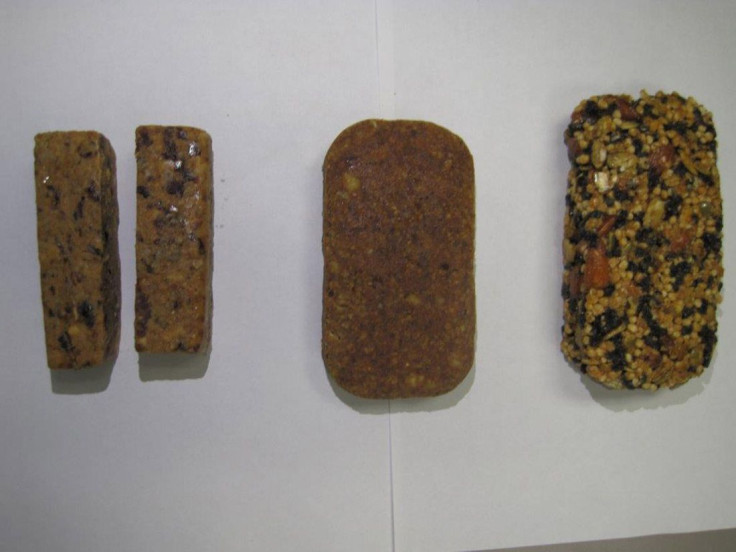Space Food: NASA Developing High Calorie Bars For Deep Space Missions

When you consider food eaten by astronauts in space from a utility point of view, you don’t have to think of only nutrition, shelf-life, taste and variety; you also need to account for another factor — the space it occupies. And this last factor becomes especially important when we talk about missions to deep space, such as the planned Orion missions.
According to NASA, Orion will take human exploration of our solar system much farther than at present, including to Mars. Till now, humans have gone only as far as the moon, while the other bodies in our immediate neighborhood having been seen firsthand only by machines we have sent out. The first Orion mission is planned for as early as 2021.
Unlike the International Space Station (ISS), however, Orion will be short on space. Since the spacecraft needs to go farther than man has ever gone before, and every ounce of weight onboard takes up that much more fuel, it is imperative to keep down the size of the vehicle as much as possible, and to use the space within as efficiently. And since Orion will travel to deep space, there will be no supply ships going to restock it and to take away its waste.
This is in sharp contrast to ISS, where astronauts can choose from about 200 items for their meals. But the crews of Orion will still need all their nutrition to keep them healthy and alert. And so, food scientists at NASA are developing high-calorie food bars.
“On Orion, the goal is to have a number of food bars to select from in a variety of flavors like orange cranberry or barbeque nut for their first meal of the day, reducing the amount of space and storage the breakfasts require. For lunch and dinner, Orion astronauts will be able to select from similar items space station crew members eat and have a food warmer to help them prepare their meals,” NASA said in a statement.
However, that first part about the food bars was easier said than done. “When you have 700 to 900 calories of something, it’s going to have some mass regardless of what shape it’s in, so we’ve taken a look at how to get some mass savings by reducing how we’re packaging and stowing what the crew would eat for breakfast for early Orion flights with crew,” Jessica Vos, deputy health and medical technical authority for Orion, said in the statement.
Takiyah Sirmons, a food scientist with the Advanced Food Technology team at NASA’s Johnson Space Center in Houston, added: “There’s no commercially-available bar right now that meets our needs, so we’ve had to go design something that will work for the crew, while trying to achieve a multi-year shelf-life.”
NASA is also working on growing fresh food in space. In August 2015, astronauts grew, and ate, red romaine lettuce aboard ISS, and a new plant growing chamber — called the Advanced Plant Habitat — is due for delivery to the orbiting space station some time in 2017.
Food in long-duration space missions important not only for nutrition of mission crew, but also because the availability of variety in food choices will affect morale positively and ensure the crew consumes enough food.
© Copyright IBTimes 2024. All rights reserved.





















